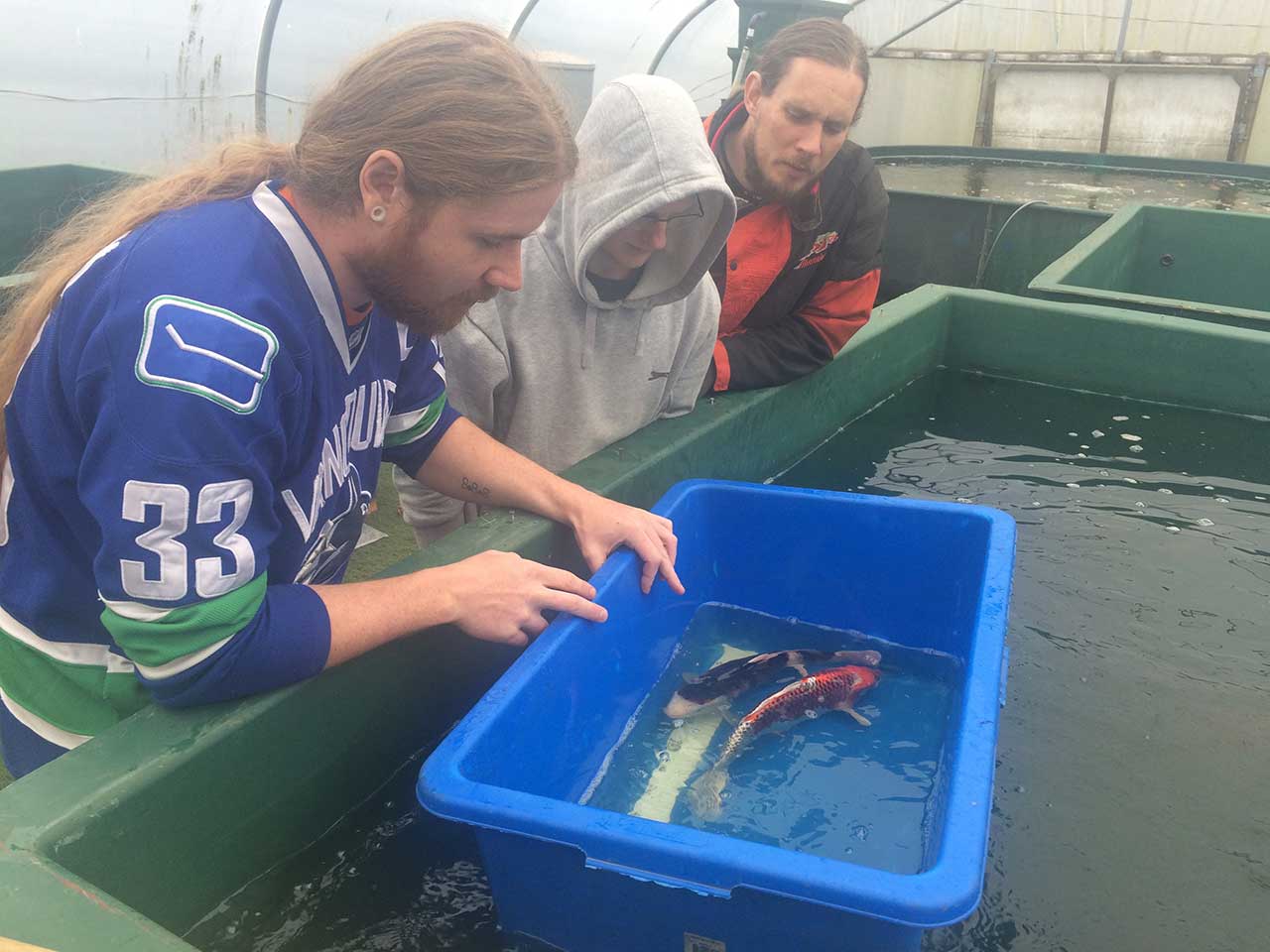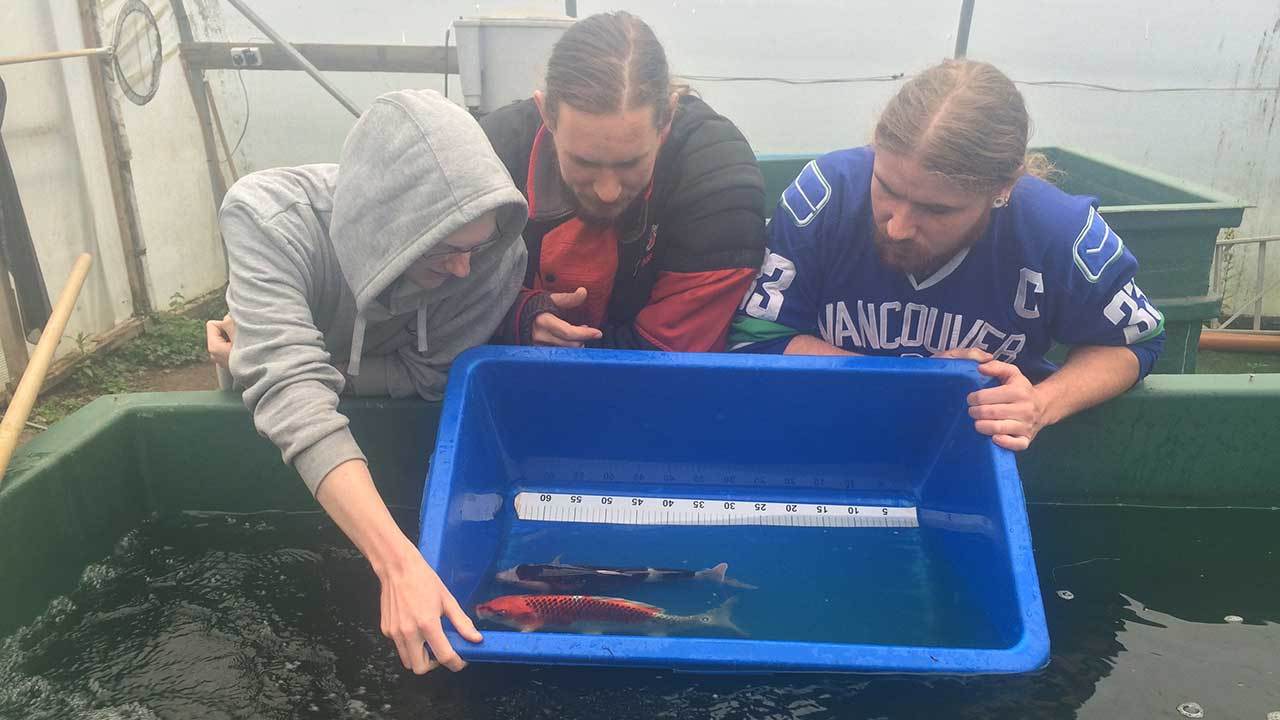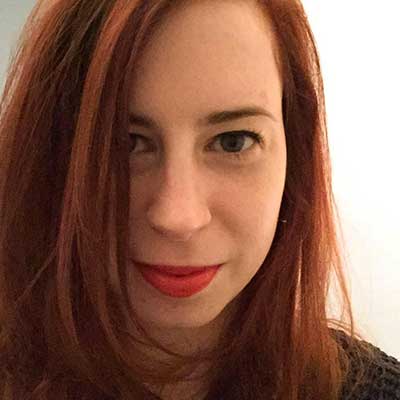Fed up with the decline in record sales and the rising cost of living in the capital, Skreamer decamped to north Wales… and set up a fish farm. Two years on, they now house around 400 koi carp and sell to select hobbyists, working full-time while fitting in writing, recording and touring. They employ several people who can take care of business while the band hit the stage, and the farm is also home to a menagerie of rescue animals, including owls, tortoises, snakes, cats and dogs. We asked frontman Samuel Morter to carp on about why fish are metal…
Why did you set up a fish farm?
“It started with needing income. The music industry isn’t the same as it was. Nowadays, the money is in live music – tours, festivals and so on. But even then, you’re making enough money to get by, really. And if it’s something you love, you need to find a way to keep it going. We chose Wales because we wanted somewhere central. As for the fish farming… we stumbled upon that, really. We were all vegetarian at the time – the line-up’s changed a bit since – but we wanted to do something where we could grow vegetables and eat free. We looked into something called aquaponics, which is using fish waste instead of dirt, to grow vegetables at an alarming rate.”
What does that involve?
“You grow these vegetables using the fish waste, and you grow the fish as well, and eat them. You usually use a fish called tilapia. So basically, it’s a completely sustainable way of eating – there’s another bill you don’t have to pay. None of us wanted to eat the fish, so we thought, ‘Okay, why don’t we do aquaponics, grow the vegetables, eat them, and we can do koi carp and sell them?’ And then it turned into a koi farm instead.”

How does a fish farm work?
“It’s maintenance. Essentially, what you’re doing is creating a habitat that the fish would have in the wild. So there’s a science to it. You’ve got to maintain water parameters and make sure there’s bacteria in the filter. The fish are basically swimming around in their own waste. So in the wild, they’d have plants that would eat that. But in man-made ponds, you have to have a filter, and that filter has to contain the same bacteria that would grow on the plants, and that gets rid of the majority of your waste. And so that’s pretty much it. It’s the science behind keeping water as opposed to fish.”
So what training do you need to farm koi carp?
“We read a lot of books! It came from an experience of getting fish, doing water tests, and trial and error. Trust me, it seems like a nightmare, because they’re so high maintenance and they stress very easily, and that’s where all problems lie. As soon as they get stressed, it’s bad news, because they’ll start getting ill – much like people. We met a lot of koi dealers who’ve become friends with us, so we got the experience of other people who’ve been doing it for years. That way, it was a lot easier. As soon as you’ve got a routine of maintenance, it’s very easy.”
What kinds of koi carp are there?
“There are so many! I’ll end up sounding crazy now, but when I started, I thought, ‘A fish is a fish.’ They’re beautiful, don’t get me wrong, but I’ve had dogs and cats all my life – animals that have personalities from the get-go. Since working with fish, you try to tell people that they have a personality, and they look at you like you’re mental. We’ve got all sorts here. It’s kind of like metal – there’s subgenres coming out your ears. You get your traditional red and white ones – they’re called Kohaku. They’re like your base fish – you see those in every pond. But then some of them get more elaborate. There’s a breed of koi called a Tancho, and that came from the Japanese flag. The expensive ones have a perfectly circular red spot right on their head between their eyes, and the rest of them is white.”
Have you ever got attached to one?
“Yes. I get told off when I name them! My favourite one is Molly. She’s got to be about 70-80cm, so she’s a big girl. With koi dealers, they always tell you to keep a Chagoi. ‘Goi’ is just ‘carp’ in Japanese, and then you’ll have a ‘Chagoi’, and that just means ‘brown carp’, and then you’ll have a ‘Kigoi’, which is yellow carp, and so on. She’s a mixture between a Chagoi and a Kigoi, so a brown and yellow carp. So yeah, just lovely. Very friendly. You can pick her up, you can do what you want with her – she’s like a labrador. She’ll eat from your hand and all sorts – always the first to feed. They tell you to keep those in your ponds because they teach the other fish that you’re not a threat, because they’re always at the surface, and they really are like big puppies.”
What’s your advice for anyone who wants to get into fish farming?
“Don’t go big straight away. Work your way up, man, because it’s incredibly high maintenance. And we’ve been fortunate to have other people in the game telling us what to do and helping us along the way, but not everybody’s going to get that. Give it a go, but start small and work your way up – don’t go straight into it. It’s like anything – don’t ever jump into the deep end.”
How metal is fish farming on a scale of 1-10?
“At least –4. At least. I’m always wearing dopey waders – I don’t look metal when I’m fish farming. I think the most metal thing I could probably do is play a bit of air guitar with one of the fish nets. They’re just not very metal animals. I’d say koi carp would prefer to listen to Coldplay than they would Gojira!”
Check out more from Skreamer on their Bandcamp.

